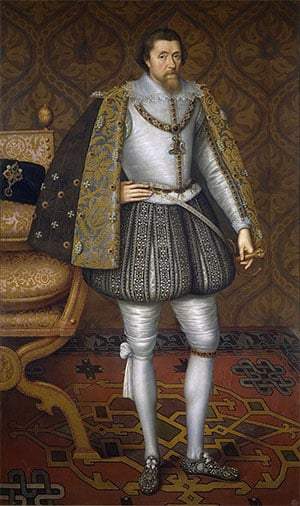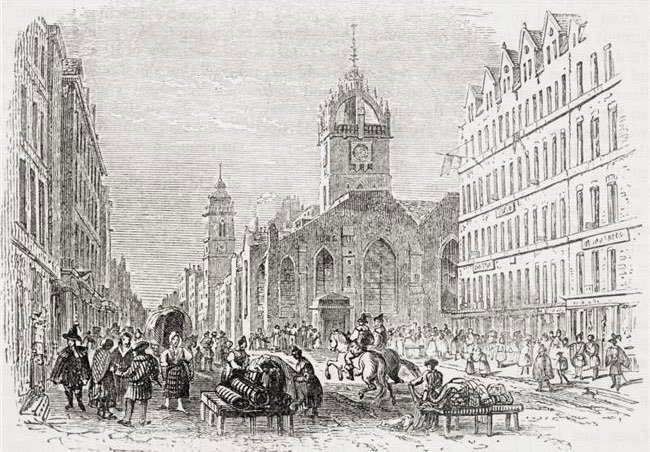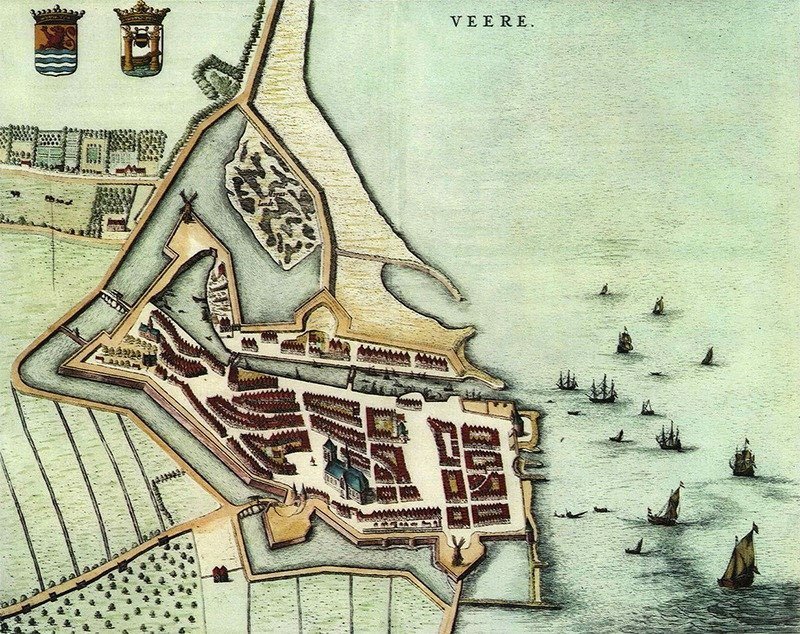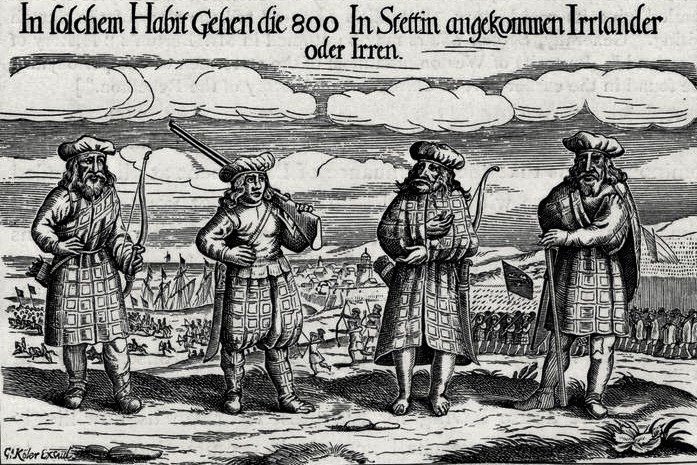The ascension to the English throne of James VI, King of Scots in 1603 was a monumental event in the history of both Scotland and England. But as the King of Scots headed south, what effect would his absence have on Scotland? This article will look at those effects to show that Scotland was affected in matters relating to government, it’s economy, feelings of fear and inferiority towards England, and, crucially, matters relating to the Scottish kirk.
The very nature of an absentee monarch in 17th century Scotland was a dramatic change in the mechanism of government. Before 1603, the elite and nobility of Scotland could reasonably expect personal access to the king, and James himself participated in almost every major arena of Scottish politics, both in parliament and in the estates. This personal access to the king departed when he rode south.
Historians have argued the case that absentee monarchy was not the earth-shattering event that it is widely conceived to be, with Jenny Wormald additionally in her book Scotland: A History adding that King James set up an ‘improved postal service’. However, it cannot be denied that even the best postal service would not be able to address the imbalance of the loss of James in the flesh, especially in the aftermath of a very divided and

A personal letter from the Earl of Rothes to Sir Robert Kerr, also complains of the ‘restrictions placed on the normal processes for politicians to advise the king’, a clear reference to the change from personal governance to governance by the pen, even though James seemed not to notice the rising tension in Scotland due to his absence, boasting “Here I sit, and
Jenny Wormald also argues that James may have been ‘misled by his advisors’ in regards to matters of union and the Five Articles of Perth’, but if the monarch were not absent from his kingdom, he would not be so vulnerable to misleading counsel, as
This all created, amongst the Scottish nobility, a feeling of inferiority to England in the eyes of their now absent king. A record from the Convention of the Burghs in 1604 clearly shows these feelings of inferiority in one specific element of the document. This convention met largely to discuss the king’s new demands and desire for a complete union with England as James himself is described as desiring to see ‘…a complete union – one king, one law, one church’. This convention was their response and, indeed, their demands should a union with England
The reality that James only managed one visit to Scotland in twenty-two years up until his death in 1625 shows the validity of those concerns. Also to be found in this source

There is also, in the records of the Convention of the Burghs, demands for Scottish economic guarantees, firstly of a maintenance of their preferred merchant status in France, and a demand to be free from customs taxes when trading with England and Ireland These demands, combined with the seeming fact, if we look at the 1604 Instructions of the Conventions of the Burghs in its entirety, that also demands that James “…remember the

The economy and trade patterns of Scotland would be greatly and forever altered by the Regal Union of 1603. Scotland, by the time of James’ ascension to the English throne, had a solid traditional trading pattern, primarily with France, the nations of Central Europe, Scandinavia and the Baltic. This trading pattern was reinforced by the emigration of substantial numbers to these nations, especially to Poland, as will be discussed later. Yet, with the relative opening up of England to Scottish traders, the trend began to shift more towards markets closer to home. Furthermore, the Ulster plantation also aided this shift toward the west, as thousands of Scottish planters there now established firm trading links with the motherland. However, the new alignment with England was to have a negative effect on Scottish trade with Europe.
Scotland had previously enjoyed special status in its trade with France, but with Scotland moving ever closer to England in economic as well as political and military matters, this began to change. Furthermore, Scottish merchant shipping became legitimate targets to the enemies of England during times of war, which were relatively frequent in the 17th century.
Multiple monarchy also greatly influenced the direction of emigration from Scotland in the 17th century. Scotland had long been a nation of emigrants. As previously mentioned, Scottish merchant communities had been established in Poland, among many other nations in Europe, along with the Dutch Republic and Sweden. There were also substantial numbers of Scottish men enlisting to fight in European armies on the continent, especially during the Thirty Years War. But one of James’ first acts as a multiple monarch was to launch the Ulster plantations, which relied substantially on Scottish migrants to succeed. Thousands of Scots crossed the Irish Sea and would continue to do so in varying quantities for decades to come, especially during the devastating Scottish famines of the 1690s.
In addition, many more Scots began to move south into England, especially into the areas around Newcastle and, most obviously, to London. Thus, Scotland’s tradition of emigration for varying factors was, by and large, unaffected. It was simply the destination which changed. The reason for this change was undoubtedly the Regal Union and multiple monarchy.

Arguably the biggest way that the absence of James affected Scotland was in the arena of religion. Since the Reformation in 1560, the kirk in Scotland had enjoyed considerable autonomy and influence in Scotland, and in the conflicts and civil wars that would grip Scotland, England
The influence of the Anglican church and James’ admiration of it had begun to grow in the first ten years of multiple
The biggest source of antagonism on the part of the kirk was, without question, the infamous Five Articles of Perth, which reintroduced things such as kneeling for communion and the celebration of Christmas and Easter. These issues were to provide the religious base of discontent and eventual resistance to the Stuart dynasty. Conrad Russell claims in his book The Fall of British Monarchies 1637-42 that James handled the religious issues well and moved both Scottish and English churches closer to each other little by little, and that it was more the incompetence of Charles that brought the multiple
However, the letter between Rothes and Kerr seems to argue against this viewpoint. In the letter, Rothes stresses how he wanted to pursue his complaints against the policies of James before the king had passed, clearly highlighting the fact that it was the policies of James that lay the foundations of the Covenanters Revolution, though the person of Charles undoubtedly greatly exacerbated the issue. It is of greater interest when considered that the author of the letter in question, the Earl of Rothes, himself went on to become one of the leaders of that revolution. This may support the theory that the letter of Rothes did not succeed in what the Earl had hoped, and his opposition to the monarchy only grew after its failure to alter royal policy, culminating in his important role in the Covenanters Revolution.
The Regal Union of 1603 and the multiple
Further Reading:
David Stevenson, ‘Charles I, the Covenants and Cromwell: 1625-1660’ in Scotland: The Making and Unmaking of the Nation c.1100-1707, edited by Bob Harris and Alan MacDonald, (Dundee University Press, 2007)
Jenny Wormald, Scotland: A History, (Oxford University Press, 2005)
T.M. Devine, Scotland’s Empire: 1600-1815, (Penguin, 2004)
Julian Goodare, Scottish Politics in the Reign of King James, (Tuckwell Press, 2000)
Keith Brown, Kingdom or Province? Scotland and the Regal Union 1603-1715, (The MacMillan Press, 1992)

